Uric acid is a waste product normally present in the blood as a result of the breakdown of purines. Excessive amounts of uric acid can cause crystals to form in the joints, leading to gout. Therefore, a low purine diet will lengthen the time between flare-ups and reduce their severity.
Foods to be eliminated: most fish and seafood, all organ meats and gravy. The following foods are moderately high in purines are to be mostly eliminated. These may be eaten once a month at most:
• anchovies
• lamb
• veal
• bacon
• liver
• salmon
• turkey
• haddock * (once a week due to high omega fat content and local fish )
Some vegetarian foods have been linked to higher purine content and are to be avoided on a daily basis including oatmeal, mushrooms, spinach, beans and lentils. These may be eaten maximum once a week.
Foods to include in your diet that are known to counteract the production of uric acid include: cherries, apples, strawberries, blueberries, kale, celery, squash, watercress and avocado.
You will need to increase vegetarian sources of protein – nuts, seeds, avocado, quinoa, and eggs. I recommend 1 cup of whole grains daily (see alternative Grains handout,) a variety of vegetables, fresh fruits, and moderate amounts of dairy products including those sourced from sheep and goat . Also, protein shakes with 2 tbsp of flax oil, fresh/frozen fruit and almond or rice milk or water are beneficial. I like the RAW Protien brand shakes, although plain whey is acceptable. Go to your local health food or whole foods store, buy a number of single serving shakes, and find one you like. Protein shakes are best for post-exercise consumption for muscle gain, or as an easy breakfast.
Once a daily balance of non-purine foods has been incorporated into your lifestyle, begin working on alkalinizing your body’s pH to achieve the optimal acid-alkaline state of health.
Black cherry juice concentrate is well known to counteract gout. Drink 1 cup daily. 8 glasses of water are also required or 1.5 Liters. Also beneficial are nettle or red clover tea, and clover sprouts. Increase turmeric in cooking.
Category Archives: Botanical Medicine
To Sleep or Not to Sleep
I love falling asleep quickly and easily and waking up 9 hours later.
When this doesnt happen, the work of unpacking the complex architecture of sleep and our associated subconscious and unconscious patterning begins. This post will provide a brief overview of sleep-wake cycle circadian dysregulation as well as nutraceuticals and botanical medicines to help fall asleep. Botanicals to stay asleep or address eearly waking will be in the following sleep post. I will not discuss prescription medications for sleep. Some people with trauma, PTSD, significant depression and anxiety, and persistent insomnia and/or sleep apnea may need pharmaceutical medications for sleep and/or sleep studies to better understand what is happening. Psychiatry, therapy and counselling can also be helpful to do a deep dive into childhood and adult patterning related to sleep or preventing sleep including hypervigilance as well as cognitive behavioral therapy to work with thought patterns preventing sleep.
Everyone agrees that sleep is worse in periods of stress, and sometimes in periods of excitement too. Disturbed sleep is also part of major depressive order for many people with either inability to sleep or desire to sleep too much. And, anyone with a significant grief experience knows that early mornings can be very tough times for waking up and experiencing sorrow. For these reasons and more, treating insomnia is far from simple as sleep is deeply entwined with the conscious and subconscious mind.
There have been many studies on sleep and health outcomes. This 2020 study by Hackett et al states: “Poor sleep quality has been linked with negative health outcomes. Adults who report sleep problems are more likely to have hypertension, obesity and coronary heart disease (CHD) than their counterparts without sleep problems (Koyanagi et al., 2014). Meta-analytic evidence has detected a relationship between short sleep duration and incident hypertension (Itani et al., 2017). However, studies investigating the prospective link between poor sleep quality and hypertension have produced mixed results (St-Onge et al., 2016). Pooled evidence indicates that short sleep duration is a risk factor for obesity (Itani et al., 2017). While poor sleep quality has been linked with the development of the metabolic syndrome in middle-aged and older adults (Troxel et al., 2010).”
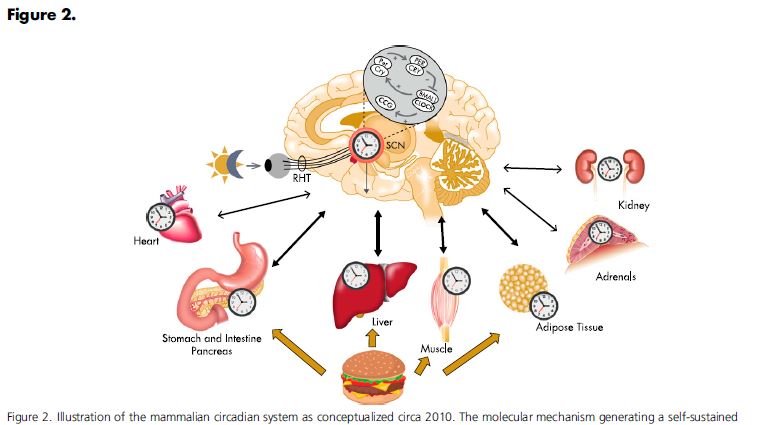
There is a reason we go to sleep at night and wake up in the morning. This is called the circadian rhythm and provides a skeletal structure for many of our hormonal biorhythms. Cortisol and ACTH levels are pulsing throughout the day and night, roughly every 60 minutes. The pulse is generated from within the HPA axis in a dynamic feedback loop. There is a threshold for a negative setpoint that is predetermined by the suprachiasmatic nucleus where ACTH pulses, stimulates cortisol production into the vasculature, which diffuses into the IC space of the brain and stops ACTH production which then retriggers the negative threshold and restarts this ULTRADEIAN cycle. At night (or during sleep hours) the circadean set point is set at a lower free cortisol level in a diurnal pattern.
Living with chronic stress can alter this rhythm. Living with depression can alter this rhythm. Substance use can alter this rhythm. Grief can alter this rhythm. PTSD can alter this rhythm. Changing time zones can alter this rhythm. Shift work can alter this rhythm. Parenting will alter this rhythm. And kids need to develop this rhythm as part of learned sleep patterns coming out of infancy.
So, once ones sleep is dysregulated, what can be done? So-called sleep hygeine is the first step. This is a basic series of actions designed to minimize sleep interruption and maximize comfort and melatonin production. I often tell patients to treat themselves like a 5 years old with a bedtime routine. This creates patterning in the mind and body (those ultradeian clocks) that signals sleep time is coming.
Insomnia falls into to big categories – falling asleep and staying asleep. We will discuss these seperately as they require different medicine.
Falling asleep. What a gift it is to drift into effortless sleep. How many times have i lain awake, unable to relax enough to let that sleep veil drift across my consciousness? Falling asleep medicine is often in the form of sedatives in an acute setting. Melatonin + a sedative botanical is a good combination for short or long term difficulty falling asleep. As you can see from the image below, melatonin production has an inverse relationship to plasma levels of cortisol. If your circadian rhythm is dysregulated, melatonin supplementation can help recreate a new pattern (which is why it is used in changing time zones.) In our “more is more” culture people sometimes think taking higher doses of melatonin will work better. In actuality, this pineal gland hormone is naturally microdosed and 1mg is often the best dose. Combining melatonin with an app to provide guided relaxation meditations or sleep-inducing music like binaural beats can increase theta waves at the level of the brain simulating deep relaxation and promoting sleep. (I use the Insight Timer free app almost every night!)
The amino acid tryptophan is converted into 5HTP which is concerted into serotonin which is converted into melatonin. This is the biochemical reason why serotonin deficiency (depression) can lead to insomnia. Increasing foods rich in tryptophan, or taking either SSRI medications or 5HTP supplement can also increase endogenous melatonin production. Do not take 5HTP and prescription mood medications unless prescribed and followed by a health care provider.
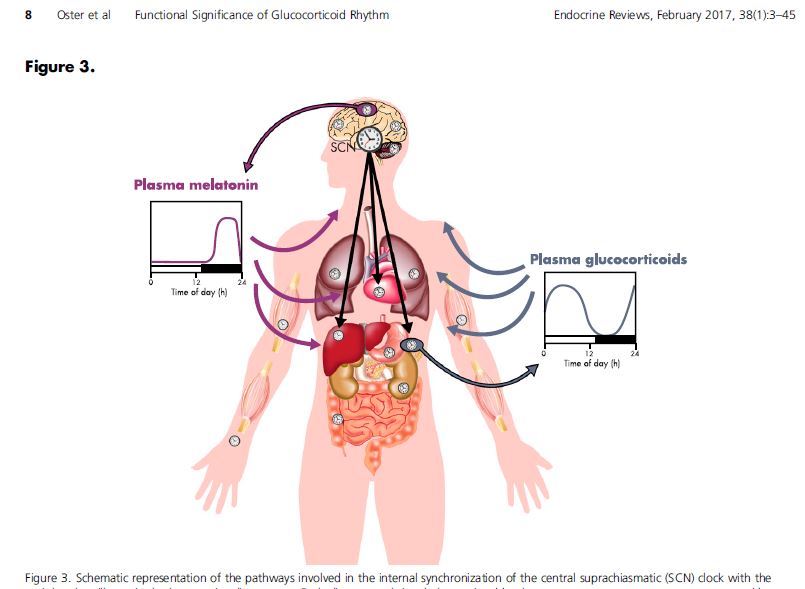
My favorite sedative botanicals are valerian (valeriana officionale) and california poppy (Eschscholzia californica). Both are decidedly yucky tasting, with california poppy being super disgusting! However, it is one of the few things that consistently works for me so I choke down the earthy swampy tincture with a juice chaser.
The European union has a formal scientific herbal monograph compendium listing the scientific and traditional uses of 167+ commonly used botanicals. This was originally created to standardize information about commonly used herbal medicines for providers and consumers in an upgradeable format as new evidence develops. I personally prefer the Alt Med review for botanical monographs which is North American but not government regulated like the European compendium. In general herbal medications come in dry form used as teas, preserved in alcohol called tinctures or preserved in glycerine for children or people who cannot tolerate alcohol, capsules of prepared herbs or standardized extract capsules with prespecified amounts of active ingredients in each capsule. The strength of the medicine increases from raw herb/ tea –> glycerite –> tincture –> capsule –> standardized extract as the most potent form.
Valerian is a natural sedative. The active phytochemicals are bicyclic monterpenes, free amino acids, and valepotriates. Valerian is very safe and can be used in pediatrics and pregnancy. I do not reccomend it in late stage kidney disease. If anyone is taking multiple medications with severe illness, please only use any herbal medication under the advice of a naturopathic doctor, experienced herbalist or physician. This plant has stinky volatile oils that are also part of why it works. The herbal chemicals are sedating and calming, they can help both to initiate sleep and to maintain sleep. Start with the lowest possible doses as a tea or low dose tincture (10-30 drops) and increase as needed up to 3 capsules before bed. The primary side effect of valerian is morning grogginess from oversedation. This can be avoided by using lower doses and less potent forms. The smell of valerian could be a factor in ones decision of which to use with glycerite and tincture the least pungent forms.
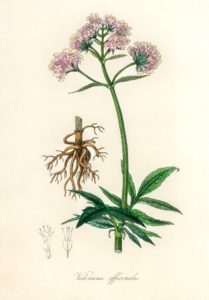
California poppy is the other sedative plant that I frequently use for my own sleep. I use it in combination with melatonin for shift work and during times of significant stress where I really need something to “knock me out.” It tastes so terrible, but some days that is a small price to pay. I have only found this plant in tincture form. It can be added to a small amount of warm water to evaporate off the alcohol. This medicinal plant is listed in the European compendium as safe for use for adults only with over 30 years of safety. It is not to be used in pregnancy or breastfeeding or for pediatrics as it is in the poppy plant family. It does not have narcotic effects but it does have many chemical alkaloids to induce sedation. It is recommended to be used for up to 2 weeks and then stopping use for at least 2 weeks.
references
- Oster H, Challet E, Ott V, Arvat E, de Kloet ER, Dijk DJ, Lightman S, Vgontzas A, Van Cauter E. The Functional and Clinical Significance of the 24-Hour Rhythm of Circulating Glucocorticoids. Endocr Rev. 2017 Feb 1;38(1):3-45. doi: 10.1210/er.2015-1080. PMID: 27749086; PMCID: PMC5563520.
- Ruth A. Hackett, Zeynep Dal, Andrew Steptoe. The relationship between sleep problems and cortisol in people with type 2 diabetes, Psychoneuroendocrinology. Volume 117,2020,104688, ISSN 0306-4530, https://doi.org/10.1016/j.psyneuen.2020.104688.
A Pandemic wasn’t the Plan: Part 2 – Anxiety/Herbal Rx 04/04/2020
I went to my local Co-op today, which is one of the only places that doesnt feel totally overwhelming to shop, and every single person had a mask on. This is the new norma I spent the week pretty anxious about the contagion and infectious side of COVID19. I had two of my patients get ruled out for the virus mid-treatment this week AND the contagion aspect seemed really important for those around me I come in contact with, not only myself. What do I need to do to not be a vector of spread? We now only wear scrubs to the hospital not work clothes, and I take my shoes off at my door. Are you freaked out about the contagious side of it? This is a real phobia for some people, and it at the root of many OCD compulsions. I feel for all the germ-phobes out there! My only advice is therapy therapy therapy. There are also one or two antidepressants that help with OCD if you are really noticing an uptick in this in your every day. Ask your PCP if they can help. If you dont have one, this is a great time to get one! Many health providers are accepting new patients, and their clinics or your local community center can help you get the health coverage you need.
Medicine really needs to start valuing mental health as equal to primary and specialty medical care in insurance reimbursements and coverage. SO much suffering comes from the mind. And teeth! Dental coverage too! I promised a blog on botanical medicine and viral illness. I am not up to date on the most current treatments and theories in the natural medicine world anymore. The Naturopathic News and Review publication is a great resource for cutting edge evidence from practicing ND’s.
Most of my botanical training is american traditional eclectic western botanicals, and the knowledge dates back to folk traditions, native medicine, midwifery, and turn of the century medicine. In this vein, there is a wealth of knowledge about foundational immune support and antivirals vs antibacterials and antifungals. If you are interested in this kind of care, most ND’s and herbalists are doing telephone and online appointments and shipping our medicine. Look under your Naturopathic Medicine State Association and see who is available in your area for personalized medicine.
Chinese botanical medicine also has a fantastic apothecary of immune supporting botanicals as well as support for basically every system. Their pharmacopeia is rich and complex with over 5000 herbs with specific indications and formulas. Many TCM Doctors and Acupuncturists are also herbalists and sell custom blended teas as part of their practice. Consider reaching out to someone locally for this as well with a phone or video appointment.
Herbal Medicine for COVID19 falls into prevention by strengthening and prevention by antimicrobial actions. Prevention by strengthening herbs are used when you are not sick. They tonify and strengthen the body, increasing reserves that can be called on if illness occurs. The following is a list of such herbs:
- nettles
- astragalus
- alfalfa
- borage
- siberian and american ginsengs
- ashwahaganda
- cordyceps and other nourishing mushroooms (use sparingly)
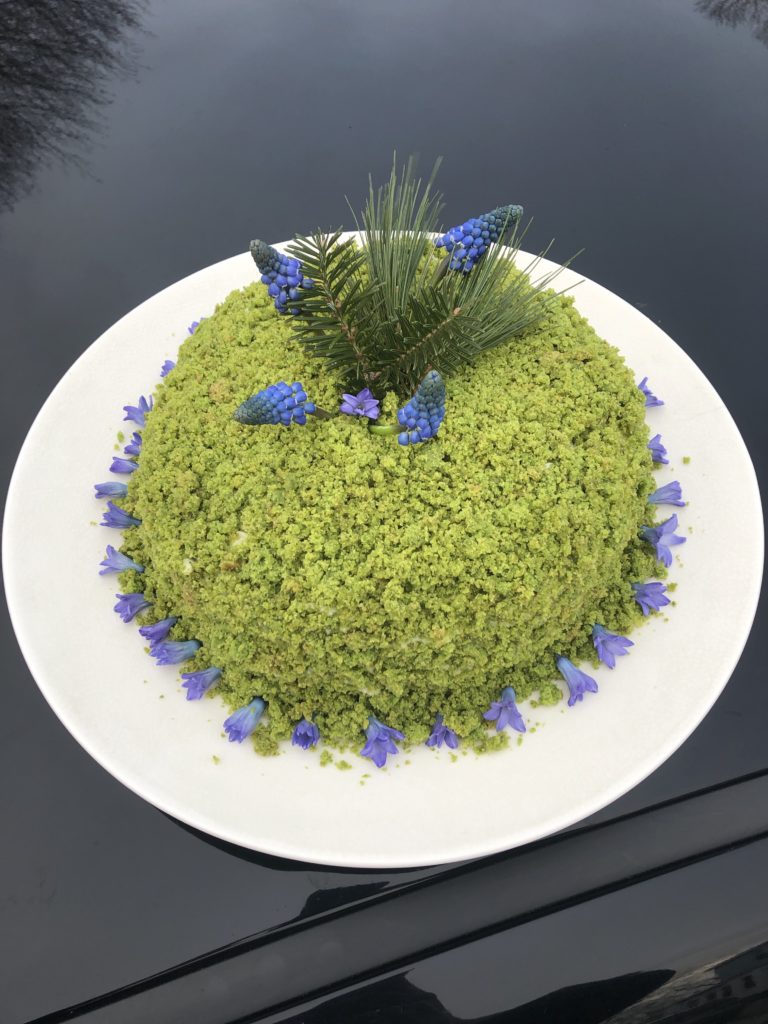
Nettles are best made as a herbal tea and drank clear and often. They can also be eaten in soups, cakes, and stir fried although this is easier in some parts of the country than others.
Astragalus is a sweet root and is best as a broth, or a tablet taken 3 tablets in morning and night. This is a key ingredient in “change of season soup” from the TCM formulary for immune strengthening as well. Borage, Siberian and American ginsengs and ashwahaganda are adrenal tonics that boost immunity by decreasing inflammation and increasing resilience. I like borage tincture 1 tsp daily, ginsengs as tinctures or pills (they don’t taste great), and ashwganda as a standardized tablet or capsule. Ashwaganda means something close to “horse piss” Ive been told, and it is named after the strength and passion of a horse as this is what it embues. These should be discontinued at the first sign of a sniffle or other illness. Then switch to active antimicrobial prevention. Taking these while sick can sometimes strengthen the pathogen rather than the host.
Antimicrobials: These are divided by their functionality.
Use these herbs as a prevention; it is best to preserve the antibacterials for signs of actual infection. Like Rx antibiotics nature’s antibacterials have strong actions and their use needs to be preserved for proper indication
A selection of commonly used antivirals includes:
- alium cepa (onion)
- allium sativa (garlic)
- echinacea – only in the first 24 hours of infection
- elderberry- usually used as a syrup that is very safe for all ages (watch for honey under 1yo) and for pregnancy –has some possible conflicting evidence for COVID19 infection, make your own informed consent to use.
- monolauren (from coconut oil)
- euphrasia (eyebright) – for viral conjunctavitis and eye symptoms
- cats claw
A selection of my fave antibacterials include:
- goldenseal – for inflamed mucus membranes and purulent discharges
- berberis – for anything that looks or feels “infected” including GI issues
- echinacea – one of the only botanicals proven against strep species. Use a glycerite form of the tincture and squirt it directly onto an inflamed throat. The glycerite is sweet and is safe for children and elders.
- cats claw – used for Lyme infection
- onion and garlic, oregano and thyme – in cooking! use liberally!
Antifungals are also important for chronic immune system depletion often manifested as thick brittle toenails or fingernails, frequent yeast infections, sinusitis and chronic belly issues. They are less relevent for this pandemic other than to sustain and support long term immune and lung health. My go-to antifungals include:
- monolauren (from coconut oil) 300mg 2 times/ day
- pau d’arco tincture or tea – 2 tsp or cups per day
- tea tree oil – topical
- caprylic acid – at least 2 caps daily
- garlic
- * a note on essential oils
I personally took a bottle of astragalus tablets 2 2twice-ish daily and now I am switching to Monolauren daily for 3 months with vitamin C and cats claw tincture daily for at least the next 3-4 weeks for intensive antiviral support. I am also taking ashwaganda as an energy tonic to support my stress levels during this unusual time to be working in medicine, and a probiotic. For my personalized medicine I have an herbal thyroid support formula alongside my Armor thyroid medication as I have Hashimotos thyroiditis. Finally, I drink homemade nettle tea or lavender/ chamomile tea and am doing the best I can to get cooked or fresh greens most days.
My training in essential oils is only for primarily olfactory/ inhaled, diffused in water or skin products. I was not trained in “by mouth” use of essential oils such as promoted by DoTerra or other EO companies so I cannot recommend tfor or against these by mouth. I do like topical and diffused use of these medicinal substances and find myself drawn to tee trea, eucalyptus and lavender, cypress, pine as my primary antimicrobial nature scents for baths, lotions, soaps and diffusion. Many flower essential oils have beneficial effects on the mind/ mental health as CN1 is a cranial nerve. There is a long tradition of use for cosmetic use as well.
Best of luck out there friendly readers. How we as humans conduct ourselves in these pandemic times can illustrate where we need to work on ourselves and where we shine bright. This is an excellent time for insight, awareness and evolution. Its also a perfect time for devolution and hopelessness. Reach out and find the resources you need or ask a friend to listen awhile: many providers are providing sliding scale or free servicesand telemedicine is blooming. The world is small with the internet. Kindness can be found in bugs on a sidewalk or a smiling eyes from 6 feet. If nothing else is true, it is that we are in this together.
Insulin Resistance
Insulin is a hormone that is produced by the pancreas that helps cells to absorb glucose in the blood. When we eat a lot of sugar or carbs, there is a rush of glucose (sugar) absorbed into the bloodstream and the pancreas responds by releasing insulin, signaling the cells to allow the sugar in. When blood sugars dip low from chronic hunger or lack of food, there is very little insulin produced.
A lifetime of sugar rushes and sugar deficits can lead to Type II Diabetes, a blood sugar disorder that is characterized by insulin resistance. Insulin resistance happens when your cells stop being able to efficiently respond to the presence of insulin. Imagine you live next to a train track, or by a fire station. Eventually the constant trains or sirens become background noise – we stop hearing them out of habituation. Insulin resistance is kind of like this – chronically elevated blood glucose results in cellular apathy. Each little cell stops posting the GLUT4 receptors in the presence of insulin and the glucose cannot be absorbed. This results in a starvation state for the cells with an overabundant state in the blood, with resulting nerve damage from high blood sugar and cellular aging from nutritional deficit. Can you imagine how this could be improved with nutritional regulation of blood glucose?
The good news is it is possible to improve insulin sensitivity at a cellular level, especially at the pre-diabetes stage. The first step is to adjust your eating habits and diet. The chronically elevated blood glucose needs to stop happening as it is the flooding of the system and causing the habitual “resistance.” This can be achieved with high protein and vegetable meals with abundant healthy fats eaten every 6 hours or so.
Our cells like a slow, steady amount of glucose and insulin in the blood. The logic is as follows: protiens and fats and high fiber carbs like vegetables and grains break down slowly in the digestion, giving a slow steady stream of nutrients and building blocks. Processed carbs, sugar and fruits are broken down quickly and result in a rush of glucose. Therefore, to slow the rush of blood sugar one needs fiber, fat and protien present with each meal. This makes sense – it is always easier to handle any situation in life when things come at us in a moderate, orderly fashion. The microcosm is the macrocosm.
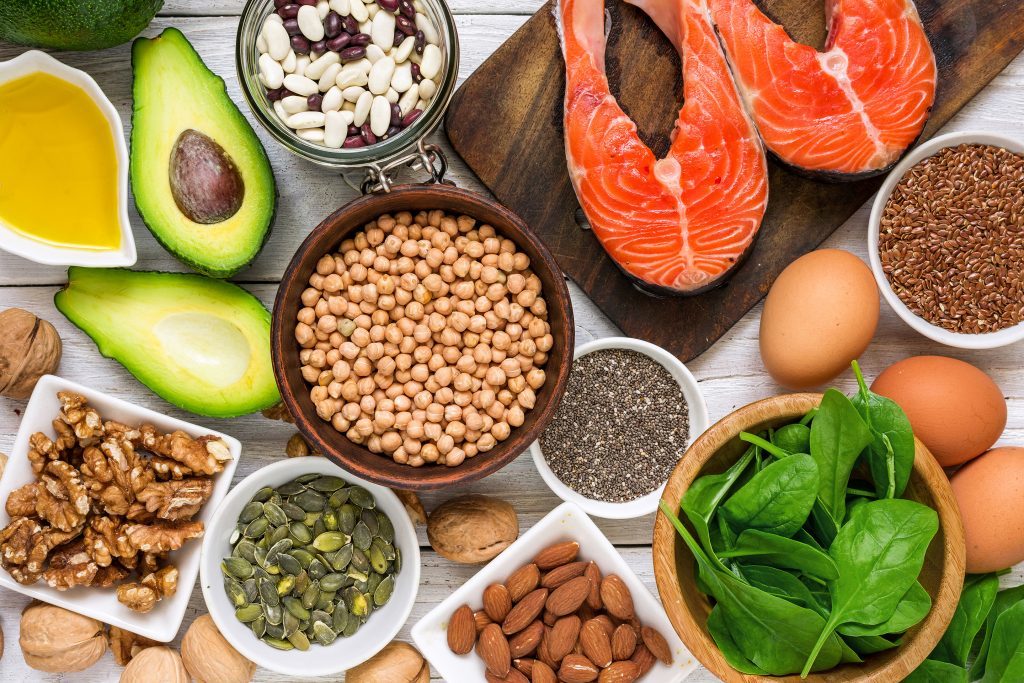
The ginseng family including Panax Ginseng and American Ginseng are also used to lower blood sugar while increasing the ability to adapt to stress. This adaptogenic action exhibits effects across multiple endocrine organs including reproductive, adrenal and pancreas, making it a great herb for modern medicine. The ginsengs work at the plasma membrane level as well as improving steroid hormone receptor sites, which may explain their benefit and use in improving insulin resistance. http://www.ncbi.nlm.nih.gov/pubmed/10571242. There are many other botanicals that have a history of use in blood sugar management including bilberry, cinnamon, gymnemna and more.
Vitamin and mineral deficiency can also worsen existing insulin resistance and exacerbate high blood sugar. The trace minerals chromium and vanadium are both cofactors in the glucose-insulin complex and deficiencies in either of these will worsen blood sugar issues. Chronic magnesium deficiency is also commonly found in people with insulin resistance. This could be due to a deficient dietary intake as magnesium is found in leafy green vegetables and broccoli as well as fish, raw nuts and seeds, avocados, bananas and dark chocolate.
Finally, high intensity, short-term exercise is essential for improving insulin resistance. This kind of exercise shifts metabolism into fuel-burning mode, instead of fuel saving mode. Being active multiple times a day is even better for shifting into glucose utilization mode and improving cell receptor activity. http://www.thebloodcode.com/type-2-diabetes-recovery-needs-daily-exercise/ . Exercise is the only thing that will independently stimulate individual cells to produce those Glut 4 insulin-regulated glucose transporters found primarily in fat and muscle cells, instantly improving insulin resistance and decreasing blood sugar.
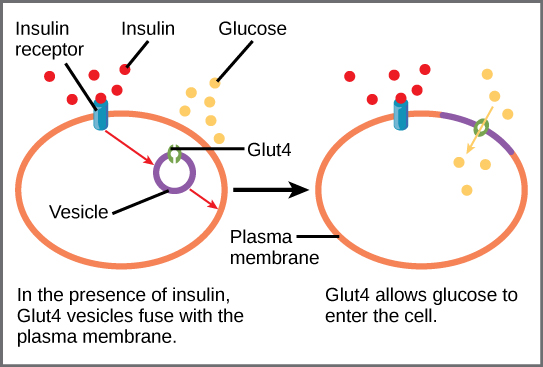
In summary, insulin resistance is a complicated condition that is essential to address in the treatment of diabetes. Fundamental nutritional changes and lifestyle basics are essential starting points for anyone interested in improving blood sugar parameters and taking an empowered stance towards metabolic recovery.
Well Hello
Its been a long time since I have posted from the medical world of Dr Wright. I am now in Albuquerque New Mexico, Land of Enchantment and Liver Disease. So many dying ciswomen in their 30s suffering of liver failure here, and transwomen too. I have been pleased with the cultural competency for trans and non binary folk in this city so far! My hospital’s respect for the transfolk and their pronouns I have seen come through the door at UNMH has been heartwarming. The work is never done, but the foundations are in place thanks to those who have done this work before me.
There are so many things I could write about it feels overwhelming. Like
- how does one deal with anxiety in a productive way that does not encourage substance use?
- how much does good food really influence health
- and
- the value of death: vs life. what is a life well lived
- what is a good death
As an internal medicine doctor I know part of my life is to facilitate death. This is the job of the warrior; and as a hospitalist I tend to those as they fight in their own particular battlefield . I have been privileged to sit with Death, and she is a mistress no one wants to see. And yet, often such a sweet gift.
I wish that hospital medicine could embrace healing meditations and buddhist lectures. Imagine folks watching these daily in their hospital beds instead of cooking shows and NCIS? These are a few of my faves:
Anything by Pema Chodron as well: I look for ones longer than 45 minutes
I certainly haven’t mastered the art of effectively handling my own stress without turning to food, or alcohol, or any thing that distracts me from the what-feels-like intolerable levels of emotion building up inside. So, I have empathy for my patients that use this coping mechanism to get through their life. What is the difference that has me as a privileged white woman in my 40s still strong and healthy foundationally, vs their 30 year old bodies that are broken down by alcohol? Genetics is certainly a piece of it. The Navajo, Zuni and Pueblo folks here have what must be a genetic succeptibility to liver failure secondary to alcohol use disorder. They are too sick, too young, and too many of them to have it be environment alone.
I cant help but feel these women are carrying the trauma of generations of dominance, trauma and oppression and it is manifesting as this alcohol sickness – a genetic trait passed from white rapists to their progeny and concentrated in generation after generation. Tie that to poverty, a lack of fresh fruits and vegetables, and ongoing systemic depression and it makes complete sense that we have these women dying, daily, in our hospital.
It is a helpless feeling, this system oppression and individual illness. This is certainly a piece of the burnout of becoming a physician. We do our best to hold together the pieces of survival for each person, holding the hope, while also titrating the reality of recovery.
As a person very new to this state I have very little working knowledge of the cultural climate of health care here and even what resources are available. As a new resident and hospital based physician, I have basically no time to investigate and advocate for this community at the ground level. All I can do is hold the space for the sickest of the sick and even in that I don’t have time to be present for their stories or their traumas.
Dandelion and Milk thistle, turmeric are not native botanicals to this part of the country, so I doubt they are used in traditional medicines? I wonder how much early liver protection with these herbs, as well as anger management, trauma based care, and other integrative therapies could be used to protect and heal the liver in the teens and twenties for these folks? My acupuncturist said New Mexico is the land of wind, and heat, both properties of the liver meridian. This would argue for an environmental component to the imbalance as well. Food, Water, Emotions, Genetics, Trauma, Environment, Substances – so many nuances to health and to disease. And I, as a doctor, am depressed with the minimal amount of time I have to explore these facets with each individual that may lend insight into prevention before these women end up in our hospital beds.
Rheumatology: Pain, Joints, and Autoimmunity
I just finished my final elective of medical school. I chose Rheumatology because I have such a strong genetic tendency towards this class of diseases, and because it was something I felt under-educated about heading into Internal Medicine.
Rheum itself means “a watery fluid that collects in or drips from the nose or eyes.” Whereas rheumatism is “any disease marked by inflammation and pain in the joints, muscles, or fibrous tissue, especially rheumatoid arthritis” according to online dictionaries. Clearly these two do not match up? Although perhaps one could argue it is the “watery fluid” of the joints that is attacked by immune system dysregulation in most of these conditions, resulting in pain, inflammation and joint destruction. 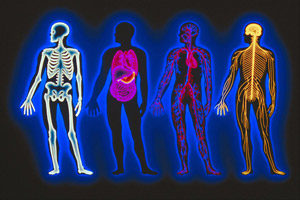 Most of these conditions are also multisystemic, affecting the heart, lungs, kidneys, eyes, skin and more. The umbrella of rheumatology is large: conditions I saw in clinic included rheumatoid arthritis, lupus, scleroderma, psoriatic arthritis, polymyositis and dermatomyositis, pseudogout, gout, and polymyalgia rheumatica. There are of course more that I did not witness.
Most of these conditions are also multisystemic, affecting the heart, lungs, kidneys, eyes, skin and more. The umbrella of rheumatology is large: conditions I saw in clinic included rheumatoid arthritis, lupus, scleroderma, psoriatic arthritis, polymyositis and dermatomyositis, pseudogout, gout, and polymyalgia rheumatica. There are of course more that I did not witness.
A large part of patient management involves managing and regulating pain. Opioids are now recognized as crutches inhibiting recovery for many people with long term pain rather than panaceas. Dr Clauw, a pain specialist from Michigan explains this way better than I could, and also addresses several prescription and over the counter medications as well as lifestyle management techniques for living your best life with chronic pain. Watch this YouTube video now, or listen to it while you drive: https://youtu.be/B0EhNajqkdU
One conversation that came up several times was the use of topicals for pain. Many folks cannot take ibuprofen for pain due to stomach or kidney disease, or are already on long term therapy with prescription strength NSAIDS and still have pain. 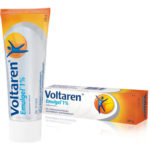 Voltarin, a topical NSAID was prescribed regularly, specifically for osteoarthritic pain at the base of the thumb with good success.
Voltarin, a topical NSAID was prescribed regularly, specifically for osteoarthritic pain at the base of the thumb with good success.
Many patients use CBD preparations for consistent pain reduction. Some people call cannabiboids “opioid sparing medications” as people can reduce the amount of narcotics needed on a daily basis with the concurrent use of CBD products. The doctors I was working with did not specifically endorse nor did they advise against medical marijuana as Maine is a state where purchase and possession is legal with certification. However, they did support individuals trying topical marijuana preparations of their own initiative for pain management.
The biochemistry of cannabinoids is super interesting if you are into psychoneuroimmunology. This recent article from Naturopathic Doctor News and Review does a pretty good job of outlining the basics of CBD oil as well as some of its politics in reference to mental health. Its use in pain management is multifactoral. There are two main cannabinoid receptors in the human body both of which are relevant to rheumatology and management of chronic inflammatory, neuropathic and mechanical pain. CB1 receptors are found throughout the brain and body and are responsible for most of the psychotropic effects; they are also found on osteocytes (bone) and chondrocytes (cartilage). CB2 receptors are primarily on immune cells as well as osteo and chondrocytes. The underlying physiology is complex and still being researched extensively but one thing is clear: cannabis-based medications are effecting in reducing chronic pain via their effect on the the endocannabinoid system in humans and altering pain chemical signalling.
As aggressive autoimmune diseases, most of these conditions require sophisticated, high end medications to manage their progression. I saw many cases of men and women who had life changing benefits from DMARDS, or Disease Modifying AntiRheumatic Drugs. My main take home point from this rotation was if one of my patient is newly diagnosed with one of these conditions, REFER! to a rheumatologist as the medications are advanced and specific. My great-grandmother was bed-bound by 40yo with rheumatoid arthritis and she did not have the benefits of science to treat her disease progression. Even tho I am also a Naturopathic Doctor, I have respect for the powerful efficacy of these medications and do believe they improve and maintain quality of life in potentially destructive conditions like these.
On the other hand, medications alone are often not enough to manage and maintain the best health possible. The 2017 textbook I was given for the elective had a small section at the back for complementary and alternative therapies that have good evidence for rheumatology.
- Vitamin C is an essential component of cartilage and collagen. Supplementation reduced progression of joint and cartilage destruction over time. My Note: Vitamin C is naturally occurring in high levels in many raw fruits and vegetables. This is a great reason to eat fresh raw foods as part of your every day diet with any kind of inflammation or joint disease.
- Vitamin D is for more than strong bones; it is also a hormone that effects immune health. Countries that have less sunlight year round have higher occurrences of autoimmune disease. Get outside 20 minutes daily minimum all year round, and supplement vitamin D every winter. Have your blood levels tested every fall to ensure optimal levels of this hormone and nutrient.
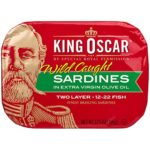 Fish Oil has known anti-inflammatory properties in its EPA component and many brain benefits in its DHA. This rich omega 3 essential fat is best eaten as a meal at least 3 times per week – a tin of sardines, mackerel or herring has way more nutritional value than a couple of fish oil pills and costs so much less. Any seafood will contain fish oil – the littler the fish, the higher the benefit when it comes to these healthy oils. If you do go for the fish oil pills know that you get what you pay for. Evidence shows you need about 3000mg of fish oil via pills daily for benefit, or at least 450 mg DHA and 750mg EPA. I like Nordic Naturals Brand for best quality and efficacy if you are going to go the pill route. For tinned fish, there are lots of brands, but this is my fave and it’s easy to find in regular grocery stores.
Fish Oil has known anti-inflammatory properties in its EPA component and many brain benefits in its DHA. This rich omega 3 essential fat is best eaten as a meal at least 3 times per week – a tin of sardines, mackerel or herring has way more nutritional value than a couple of fish oil pills and costs so much less. Any seafood will contain fish oil – the littler the fish, the higher the benefit when it comes to these healthy oils. If you do go for the fish oil pills know that you get what you pay for. Evidence shows you need about 3000mg of fish oil via pills daily for benefit, or at least 450 mg DHA and 750mg EPA. I like Nordic Naturals Brand for best quality and efficacy if you are going to go the pill route. For tinned fish, there are lots of brands, but this is my fave and it’s easy to find in regular grocery stores.- Omega 3 oil is also available in vegetarian form as flax seed oil or marine algae oils.
The evidence for a specific kind of diet for autoimmune disease is variable. Dr Jackson referenced the Mediterranean Diet as the best foundational nutritional plan for Lupus specifically. This makes sense as it is a low inflammatory, high fruit, fiber and vegetable diet with known benefits for heart health and longevity.
Many people choose to go paleo, or follow the whole 30 autoimmune diet plan. Phoenix Helix is a podcast dedicated to autoimmune health and paleo nutrition. During my rotation I listened to a great episode with Dr. Aly Cohen, an integrative rheumatologist who spoke on scleroderma and integrative medical management. In addition to reviewing some specific suggestions for scleroderma, Dr. Cohen spoke on the importance of reducing processed food chemicals, pesticides and additives and choosing clean drinking water, not from plastic bottles. As she said, over 90,000 chemicals have been introduced to the ecosystem and therefore the human body in less than 100 years. Autoimmune disease is linked to this toxic burden and inability to process the chemicals. Find out more about her work @thesmarthuman on Twitter and Facebook.
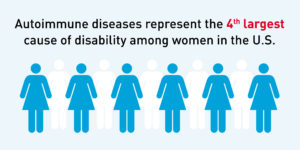 Three weeks of rheumatology clinic was only enough to learn the basics of diagnosis and management, and gave me great respect for my fellow Rheumatologicial internists. Each of the conditions under the Rheumatology umbrella have advanced immune dysregulation and multisystemic consequences with potentially dire outcomes. Fortunately, pharmacology has a class of exceptional medications that work quite well, especially when paired with nutritional initiatives and long term pain management strategies that focus on quality of life. I am grateful to Dr. Stanhope and Dr. Jackson at Central Maine Medical Center Rheumatology Associates for letting me ask too many questions while they were trying to write notes during their busy clinic days – and for the freedom to enjoy afternoon sunshine on my last medical school rotation!
Three weeks of rheumatology clinic was only enough to learn the basics of diagnosis and management, and gave me great respect for my fellow Rheumatologicial internists. Each of the conditions under the Rheumatology umbrella have advanced immune dysregulation and multisystemic consequences with potentially dire outcomes. Fortunately, pharmacology has a class of exceptional medications that work quite well, especially when paired with nutritional initiatives and long term pain management strategies that focus on quality of life. I am grateful to Dr. Stanhope and Dr. Jackson at Central Maine Medical Center Rheumatology Associates for letting me ask too many questions while they were trying to write notes during their busy clinic days – and for the freedom to enjoy afternoon sunshine on my last medical school rotation!
The Pain Conundrum: Options & Alternatives
I’m a woman with chronic pain. It waxes and wanes, but I have been on flourbiprofen, a prescription-strength NSAID for about 20 years. I take it about a week before and the week of my menses. That is two weeks a month of strong NSAID use. Plus, ibuprofen for occasional headaches or other pains.
After spending a week observing a nephrology office in January, I started thinking about my own NSAID use and kidney health. After getting some lab evaluation (creatinine, BUN and GFR) it turns out I have stage 2 kidney disease. WHAT!! I consider myself an extremely healthy woman, and no doctor has ever mentioned kidney issues, much less had a conversation with me about the well known, scientifically proven ways that NSAIDS like ibuprofen, alleve, midol, and aspirin damage kidneys.
Here is the science: The kidneys receive about 25% of the blood flow from the heart, and filter blood through their delicate & intricate filter and tube mechanisms.
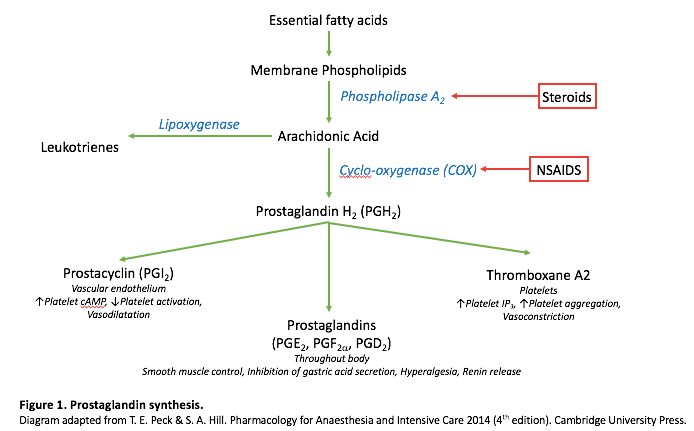 It is prostaglandins that increase pain and inflammation. All NSAID medications work by inhibiting the cyclooxygenase (COX) enzyme, thus decreasing prostaglandin synthesis.However, ibuprofen and all NSAIDs also interfere with the body’s natural blood vessel constriction and dilation hormones through this system, ultimately affecting the kidneys. In the long term, this damages the delicate kidney structures from irregular blood flow. It can also lead to chronic high blood pressure.
It is prostaglandins that increase pain and inflammation. All NSAID medications work by inhibiting the cyclooxygenase (COX) enzyme, thus decreasing prostaglandin synthesis.However, ibuprofen and all NSAIDs also interfere with the body’s natural blood vessel constriction and dilation hormones through this system, ultimately affecting the kidneys. In the long term, this damages the delicate kidney structures from irregular blood flow. It can also lead to chronic high blood pressure.
To make matters worse, there is a second way that ibuprofen, aspirin and other NSAIDs damage the kidneys. The immune system can react against these drugs and cause an inflammatory reaction right in the matrix of the kidneys. This is called Acute Interstitial Nephritis and can happen after only one week of use. It can also become a chronic, simmering problem that is definitely underdiagnosed.
So, what to do? We cant use opioid pain medication like we used to because it is extremely addicting, and now ibuprofen, aspirin and products like Motrin or Alleve are also harmful. Sadly, acetaminophen, or Tylenol is a centrally acting medication with little anti-inflammatory action and it doesn’t work well for most pain although it is great for fever.
 First of all, I would argue we as a culture need to become a little more tolerant to living with some discomfort. Pain is often a sign that something else needs to be addressed: like, hydration, nutrition, posture, or drug/alcohol overuse.
First of all, I would argue we as a culture need to become a little more tolerant to living with some discomfort. Pain is often a sign that something else needs to be addressed: like, hydration, nutrition, posture, or drug/alcohol overuse.
Second, the practice of prevention goes a long way to decreasing the duration and quantity of pain medications needed. WE ARE LAZY!! Simple stretching and at-home exercises can do wonders for back and body pain as can weekly yoga. People who don’t know basic stretches can be referred to physical therapy for individual assessment; this is covered by most private and federal insurances. The newest guidelines from the American Academy of Family Physicians recommend:
“Nonpharmacologic treatment, including exercise, multidisciplinary rehabilitation, acupuncture, mindfulness-based stress reduction, tai chi, yoga, motor control exercise, progressive relaxation, biofeedback, low-level laser therapy, cognitive behavioral therapy, or spinal manipulation, should be used initially for most patients who have chronic low back pain.”
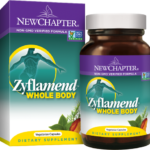 Finally, botanical medicine has an evidenced role in combating pain. Most herbs are better used proactively for prevention of pain and inflammation than acutely when symptoms are already present. Turmeric, ginger, black pepper and boswellia all have a long history of use for muscle and joint issues. New Chapter has a herbal Zyflammend product line that specifically addresses pain and/or age-related joint disease that is worth trying. Take as directed on the label, 2 tabs daily for at least 6 weeks to assess your response.
Finally, botanical medicine has an evidenced role in combating pain. Most herbs are better used proactively for prevention of pain and inflammation than acutely when symptoms are already present. Turmeric, ginger, black pepper and boswellia all have a long history of use for muscle and joint issues. New Chapter has a herbal Zyflammend product line that specifically addresses pain and/or age-related joint disease that is worth trying. Take as directed on the label, 2 tabs daily for at least 6 weeks to assess your response.
DLPA is a less used supplement for chronic pain and depression. This is DL-phenylalanine, an amino acid that gets converted into tyrosine. Rather than directly addressing pain, DLPA slows endorphin breakdown by decreasing enzymatic function. This results in higher endorphin levels for pain control as well as increased adrenal hormones such as norepinephrine. The dosage varies from 1500mg on an empty stomach each morning to 200mg twice daily. For gynecological pain like mine, cramp bark is another option. This needs to be taken in moderately high doses (3 caps 2-3 times per day) just before menstrual pains begin, and continued throughout the pain window.
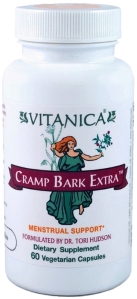 These are all good options for all kinds of pain, not just back pain. If we as a consumers were willing to put the same effort into treating & preventing our various pains proactively instead of just popping 3 Advil every 4 hours, we may live longer and healthier. The effect on the kidney is also real, and needs to be talked about more. I see patients dying of kidney failure in the hospital every day, and it is not pretty. I know that I am forcing myself to be more tolerant of the low grade pains I live with, and I just started using herbs (Vitanica’s cramp bark) and (walking and stretching) exercises in an attempt to minimize the pain medications I may really need in a few days. I am hoping it makes a difference, because my kidneys aren’t really up for another 10 years of this.
These are all good options for all kinds of pain, not just back pain. If we as a consumers were willing to put the same effort into treating & preventing our various pains proactively instead of just popping 3 Advil every 4 hours, we may live longer and healthier. The effect on the kidney is also real, and needs to be talked about more. I see patients dying of kidney failure in the hospital every day, and it is not pretty. I know that I am forcing myself to be more tolerant of the low grade pains I live with, and I just started using herbs (Vitanica’s cramp bark) and (walking and stretching) exercises in an attempt to minimize the pain medications I may really need in a few days. I am hoping it makes a difference, because my kidneys aren’t really up for another 10 years of this.
Insomnia is the Worst!
 I was on vacation with my sweetheart this past week, and spent two long nights in a hotel room when I could.not.fall.asleep! What to do? It was so exhausting, and of course set my mood and energy levels off for the remainder of the trip.
I was on vacation with my sweetheart this past week, and spent two long nights in a hotel room when I could.not.fall.asleep! What to do? It was so exhausting, and of course set my mood and energy levels off for the remainder of the trip.
When I evaluate sleep from an Integrative Medicine perspective, I usually break it into –
- unable to fall asleep
- unable to stay asleep.
The former tends to have a different set of causes and therefore medications than the latter. Sleep is complex and involves multiple body systems working together including endocrine, neurological, immune, musculoskeletal, and mental/emotional at the very least! Each person with chronic insomnia will benefit most from individualized treatment, but here are some generalizations to improve sleep.
First, as boring and arcane as it sounds, sleep hygiene is important. Hygiene is a strange word to associate with sleep, IMHO. It sounds weird and uncomfortable, but “sleep hygeine” is a general concept that encompasses the environmental and behavioral aspects that are known to improve sleep quality and promote restful sleep. For example, my hotel room was too hot both nights. Maintaining a comfortable room temperature preferably cool with fresh air, is known to improve sleep quality. A darkened room without blinking or other lights within eyesight and a peaceful bedtime routine are also examples of sleep hygiene.
 To fall asleep, sedatives are the key. Valerian is the strongest herb for sleep support. This herb was mentioned by Hippocrates in his writings, and is one of the oldest sedatives known. It has numerous studies supporting its use for sleep. The essential oils in valerian appear to provide its sedative activity, while the valepotriates exert a regulatory effect on the autonomic nervous system. Although more than 150 constituents have been identified, none appear to be solely responsible for valerian’s effects, suggesting many compounds may act synergistically. Valerian’s mechanisms of action are not completely understood. Valerian interacts with neurotransmitters such as GABA and produces a dose-dependent release of GABA. Valerian also inhibits the enzyme-induced breakdown of GABA in the brain.
To fall asleep, sedatives are the key. Valerian is the strongest herb for sleep support. This herb was mentioned by Hippocrates in his writings, and is one of the oldest sedatives known. It has numerous studies supporting its use for sleep. The essential oils in valerian appear to provide its sedative activity, while the valepotriates exert a regulatory effect on the autonomic nervous system. Although more than 150 constituents have been identified, none appear to be solely responsible for valerian’s effects, suggesting many compounds may act synergistically. Valerian’s mechanisms of action are not completely understood. Valerian interacts with neurotransmitters such as GABA and produces a dose-dependent release of GABA. Valerian also inhibits the enzyme-induced breakdown of GABA in the brain.
GABA is my other secret weapon for falling asleep. There are two on switch neurotransmitters (dopamine and acetycholine) and two off switches (gaba and serotonin.) When the off switch is stuck on, sleep becomes difficult. Taking GABA as a supplement improves GABA levels in the brain, quieting the mind. Benzodiazepenes like Attivan and hypnotics like Ambian also work to increase GABA levels, as does Valerian. *Don’t use these all together as they can depress respiratory function as a cocktail.
 Difficulty staying asleep can be more complicated to treat than falling asleep. Taking sedatives at 2 – 4 am can result in morning grogginess. From my experience, early waking (3am) is often related to a dysregulated cortisol clock, or, put simply, stress. Cortisol is the primary stress hormone produced by the adrenal glands. It runs on a 24 hour clock, and should be highest at 8am, and slowly drop during the day and rise at night. With emotional and/or physical stress, travel to different time zones, or shift work, the cortisol clock can become dysregulated, peaking earlier and earlier, creating an too-early wake up signal. Adrenal support is key. I often use herbs like ashwaganda, L-theanine, rhodiola, relora, and more to help regulate adrenal hormone production and heal imbalances. Cortisol is complicated, and balancing requires an in-depth look at ones lifestyle, mental health, stress coping techniques, exercise patterns, blood sugar and more. Therefore, treating stress and adrenal health in relation to sleep is best with an individualized approach, as “cookbook” medicine rarely gives optimized results.
Difficulty staying asleep can be more complicated to treat than falling asleep. Taking sedatives at 2 – 4 am can result in morning grogginess. From my experience, early waking (3am) is often related to a dysregulated cortisol clock, or, put simply, stress. Cortisol is the primary stress hormone produced by the adrenal glands. It runs on a 24 hour clock, and should be highest at 8am, and slowly drop during the day and rise at night. With emotional and/or physical stress, travel to different time zones, or shift work, the cortisol clock can become dysregulated, peaking earlier and earlier, creating an too-early wake up signal. Adrenal support is key. I often use herbs like ashwaganda, L-theanine, rhodiola, relora, and more to help regulate adrenal hormone production and heal imbalances. Cortisol is complicated, and balancing requires an in-depth look at ones lifestyle, mental health, stress coping techniques, exercise patterns, blood sugar and more. Therefore, treating stress and adrenal health in relation to sleep is best with an individualized approach, as “cookbook” medicine rarely gives optimized results.
For really tough sleep cases, NeuroScience labs makes a neurotransmitter panel to assess what is causing the night time wakefulness. Blood sugar disorders, sympathetic nervous system activation, cortisol dysregulation, hormone imbalance, anxiety, depression, grief, and more can all be part of the “perfect storm” of insomnia. Find a Naturopathic Doctor in your area to unravel the depths of your sleep mystery.
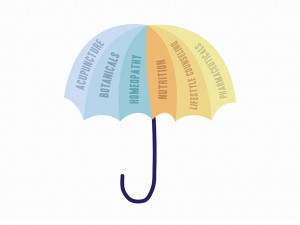 Finally, energetic medicines like acupuncture and homeopathy can be invaluable for unlocking sleeps depths. We are quantum physics humans, we do not operate in straightforward paradigm. Sometimes sleep issues go back to childhood dysregulation or other “never been well since” life events. These more energetic medicines can work to correct these deep imbalances by integrating unresolved issues that plague your subconscious when your guard is down. Psychotherapy and cognitive behavioral strategies can also be used to unravel sleep and stress mysteries.
Finally, energetic medicines like acupuncture and homeopathy can be invaluable for unlocking sleeps depths. We are quantum physics humans, we do not operate in straightforward paradigm. Sometimes sleep issues go back to childhood dysregulation or other “never been well since” life events. These more energetic medicines can work to correct these deep imbalances by integrating unresolved issues that plague your subconscious when your guard is down. Psychotherapy and cognitive behavioral strategies can also be used to unravel sleep and stress mysteries.
I was lucky: once I was able to come down from the stress before my trip, and relax into my holiday my sleep improved, and I even got to sleep in for a change! What do you need to get that beauty sleep you so desire?
Fertility is the New Holy Grail
Resolve to know more about the underling factors affecting conception and alternative family possibilities. * This article was originally written for the February 2015 Digital Issue of Essential Living Maine*
I had two stepmothers who were infertile for various reasons, and have an adopted baby brother. Several of my close friends and family member have used IVF to conceive, and I have my eggs cryopreserved. A few of my good friends have fostered and adopted, and others have intentionally chosen childfree lives. As lesbian and gay marriage has normalized, and divorce rates have climbed, more and more alternative families are being created using sperm banks, surrogates, egg donors, known sperm donors and more. The quest for fertility is all around us, and has been for the past 30 years in ever-increasing numbers.
The Internet has an enormous amount of information available on this topic, as the World Wide Web offers an enormous cross cultural support network for women trying to conceive (#TTC.) Infertility is usually a silent disease without any visible disability associated; however, it draws deeply on the mind/body and soul in underground ways that cannot be explained to those who do not have to undergo its trails and tribulations. Thus, the web is a great way to connect, share information, and do research while maintaining public anonymity.
 Integrative Medicine is key to enhancing fertility. Integrative Medicine combines the best of modern medicine (reproductive technology) with time-honored complementary and alternative medicines (botanical therapies, clinical nutrition, homeopathy, acupuncture, and stress management support.) The quest to get pregnant (and stay pregnant!) has been a calling of doctors and midwives since the beginning of time and across all cultures.
Integrative Medicine is key to enhancing fertility. Integrative Medicine combines the best of modern medicine (reproductive technology) with time-honored complementary and alternative medicines (botanical therapies, clinical nutrition, homeopathy, acupuncture, and stress management support.) The quest to get pregnant (and stay pregnant!) has been a calling of doctors and midwives since the beginning of time and across all cultures.
After ten years of fertility specialization, here are my Top Ten Integrative Medicine Fertility Fundamentals to know about when mapping your journey:
- First, while on oral contraceptive pills, rings, or IUD’s and for at least 6 months coming off them, it is important to supplement with a good quality multivitamin that contains at least 10-20mg of all of the B vitamins, magnesium, vitamin C, and 800mg folic acid. These are depleted by synthetic estrogens, and a deficiency can cause long term fertility issues down the road.
- If you have a family hx of miscarriage, have had a miscarriage yourself, or have any anemia or high homocysteine on lab work, you may want to test for a genetic defect called MTHFR that leads to a folic acid absorption issue. http://www.apothecarybydesign.com/blog/archives/332
- DHEA is a fat-soluble antioxidant and hormone precursor produced by the adrenal glands. DHEA is also a key player in egg health, showing improved embryo quality and higher live birth rates than controls. Studies have used 75 mg of DHEA daily. 1 DHEA supplementation also evidenced higher rates of spontaneous pregnancies in long-term poor responders to IVF in another study using 25 mg three times per day. 2 DHEA supplementation slows the aging process by preventing lipid oxidation while improving energy and metabolism.
- CoQ10 is imperative to egg health. Egg division from 46 to 23 chromosomes requires effective mitochondrial function. 3. It has been suggested that mitochondrial DNA defects that effect metabolic capacity may be a cause of failure in egg maturation, fertilization, or early embryonic development. 4. Aged eggs have decreased mitochondrial energy which can result in deficient energy to divide properly resulting in Downs’s syndrome and other genetic anomalies. All women over 30 who are still considering pregnancy should be on 100mg of ubiquinol daily to maintain efficient mitochondrial activity.
- Test your hormones early, and keep testing every few years for an objective measurement of fertility reserves. Follicle Stimulating Hormone (FSH) levels must be tested on day 3 of the menstrual cycle with Anti Mullerian Levels (AMH) levels before beginning fertility protocols. FSH reflects the relationship between the ovaries and pituitary and higher levels indicate perimenopause and poor ovarian function. Therefore, levels of FSH under 10 are best. AMH is also called the “egg timer” as it gives an accurate level of the follicular reserves of the ovaries. AMH levels do not fluctuate throughout a cycle and can be tested at any time. Serum AMH levels decline throughout ones reproductive life cycle, and are undetectable after menopause; therefore, higher levels are more desirable.
- Don’t wait too long to consider IVF. If you have been #TTC for more than 9 months and have not become pregnant with regular, timed inseminations, IUI’s or intercourse, make appointments with a fertility clinic and an Integrative fertility specialist. Having a Plan B will decrease stress, and it takes time to consider the financial and medical burdens associated with reproductive technology. However, it is worth it to have that baby in your arms! If IVF is needed, committing to the process earlier in your fertility journey can increase your chances for that #BFP (Big Fat Positive) on your first attempt.
- Don’t forget the men! At least 30% of infertility is male factor. Too often one half of the couple is doing everything possible (yoga, clean eating, no caffeine, no alcohol, meditation, support group, acupuncture, etc) while the other half is the root cause of the issue. Getting a sperm analysis is one of the first steps in a fertility evaluation, and can bypass months of angst from non-conception.
- Sperm need fertility enhancing supplements too! Omega 3 fats, 15 mg zinc, and stress busting herbs like Maca or Ashwaganda will improve sperm health, tonify libido and boost fertility.
- Have your thyroid hormones including TSH, Free T3 and Free T4 and your progesterone levels tested. Low thyroid function leads to low progesterone, which leads to frequent miscarriage in a classic vicious cycle. Some Endocrinologists and Family Docs may have conservative opinions on these levels and may use outdated reference ranges or be unwilling to test for Free T3. Consulting an Integrative Medicine Doc, Naturopathic Doctor or anti-aging Hormone Doctor may give you more information about optimizing your hormone levels rather than operating at a subclinical deficiency.
- Consider alternatives to the traditional nuclear family. There are many beautiful babies who want safe, stable, loving homes and need fostering and adoption. I know three amazing families of beautiful fostered babies! There are also women able and willing to carry babies to create families that are not their own. While a biological birth is what we are taught to dream for, this is not the answer for some. Infertility is tragic and real for people who have always assumed they would be able to birth when they are ready. Allow your self to grieve as a couple, but do not close the door on other options even if they seem inconceivable at first.
On another note, childfree living also has many blessings. Our culture is slowly shifting away from the definition of having a (nuclear) family as the ultimate success. Childfree living allows for a more relaxed and abundant lifestyle with more freedom, ability to travel, and heightened romance for a couple. We are an overpopulated planet, and I know from my life, having an auntie that is invested and involved in my life is incredibly valuable. Here are many ways to be a part of a family, and each version needs to be recognized as equally valuable and important!
I could keep typing another ten set of treatments supports, and probably another ten after that, I am so passionate about fertility! However, as I said earlier the Internet is a rich resource. Some other articles I have written on the topic include:
- A technical piece on IVF preparation https://ndnr.com/endocrinology/ivf-integrative–fertility-support/
- Ten Steps for Getting That Mothers Day Card http://thewrightdoctor.com/womens-health-2/10-steps-towards-getting-that-mothers-day-card/
- A more recent piece on fertility and Advanced Maternal Age http://thewrightdoctor.com/2014/07/12/advanced-maternal-age/
I wish each of you success on your Holy Grail of Fertility. May your journey connect you to your own Divine nature as you experience one of the great, uncontrollable mysteries of life: Conception!
References
- Addition of Dehydroepiandrosterone (DHEA) for poor-responder patients before and during IVF treatment improves the pregnancy rate: a randomized prospective study. Hum Reprod. 2010; 25(10): 2496-500Accessed September 13 2013
- Leonidas mamas, Eudoxia Mamas. Dehydroepiandrosterone supplementation in assisted reproduction: rationale and results. Current Opinion in Obstetrics and Gynecology 2009, 21:306-308.
- David Meldrum, MD. Aging gonads, glands, and gametes: immutable or partially reversible changes? Fertility and Sterility 2013; 99:1-4.
- The use of mitochondrial nutrients to improve the outcome of infertility treatment in older patients. Fertility and Sterility 2010; 93:272-5.
To book an appointment:
http://www.agemanagementcenter.com/contact-amc/ or call 207-774-1356
Clinical Practice:
www.facebook.com/AgeManagementCenter
For more information about Infertility see:
- http://www.resolve.org/infertility101 (Basic understanding of the disease of infertility.)
- http://www.resolve.org/national-infertility-awareness-week/about.html (About NIAW)
DETOX 2015: Start the New Year With A Clean Metabolic Slate
tabula rasa – the latin term for “erased slate” referring to the emptiness of a slate sheet that was previously written on by chalk.
To start the New Year with a fresh clean slate we need to erase the old clutter from our internal metabolic “chalk board”, which means DETOXIFICATION.
Why detoxify? Intermediate metabolites build up like desk clutter from all of the work that our liver has to do to break down hormones, pesticides, pollution, cholesterol, medications, bacteria, viruses, alcohol, caffeine, and everything else that we inhale or ingest. Symptoms of this “clutter” include allergies, skin disorders, constipation or diarrhea, heartburn, irritability, fuzzy thinking, headaches, low energy, fatigue and many more low grade but uncomfortable signs of poor health.
I do not believe in crazy diets, water fasting, purges, enemas, or other “heroic” efforts. An effective detoxification process can be simple, inexpensive, easy to accomplish and leave you feeling fresh, renewed and in many cases with less weight! The focus is on fresh, whole foods, clean water, daily smoothies and supplements to improve liver detoxification.
I will be offering an all-inclusive program for one week in January – The tentative dates are January 10-17, 2015. One week is enough time to begin the detoxification process in the liver, but not so much time as to interrupt our busy lives. This program will be a group event, with individual introductory sessions to troubleshoot potential obstacles during the detoxification process. This program will consist of:
- A 30 minute detox interview and consultation to assess your personal needs. (The interview can be bypassed for Dr. Wright’s current patients.)
- A 60 minute group meeting to introduce the program, review the basics of detoxification, and get you ready to start!
- One week of detoxification with daily email support and a Facebook group for recipe sharing, troubleshooting and cheerleading.
- A 30 minute group program review at the end to assess the effects, with suggestions on supplements and lifestyle options to maintain the beneficial effects of the detox.
Some people may choose to repeat the detox cycle for 1-3 more weeks in order to really delve into metabolic restoration; however this is an independent option.
Call Age Management Center today at 207-774-1356  or email Dr. Wright at thewrightnd@gmail.com and find out how our New Years Metabolic Detox program can help improve focus, increase energy, decrease allergies and enhance metabolic balance.
or email Dr. Wright at thewrightnd@gmail.com and find out how our New Years Metabolic Detox program can help improve focus, increase energy, decrease allergies and enhance metabolic balance.
Cost: $250 inclusive, prepaid new patients or those needing individualized 30 minute support session.
Cost breakdown: 30 minute consultation: $75, Core Restore Detox Kit $100, 60 minute initial group consultation $50, 30 minute review session $25. Administration, daily emails during the detox program, Facebook group monitoring and detox troubleshooting included.
Current patient & friend/family rate: $175. (Does not include the 30 minute individual consultation.)
Some patients may choose additional Integrative Medicine consultations for more personalized care; individuals who choose to become patients of Dr. Wright’s during or after the program will have $75 taken off her initial consultation fee.


